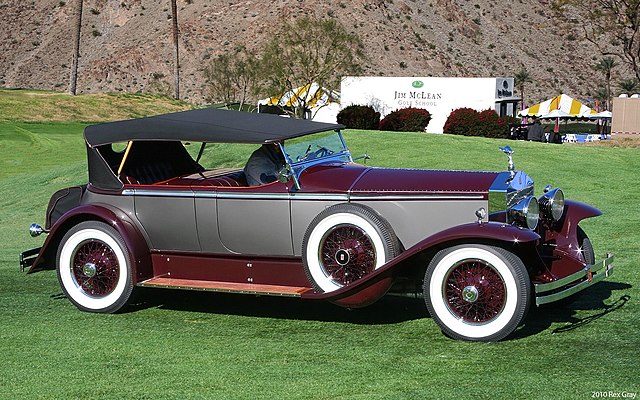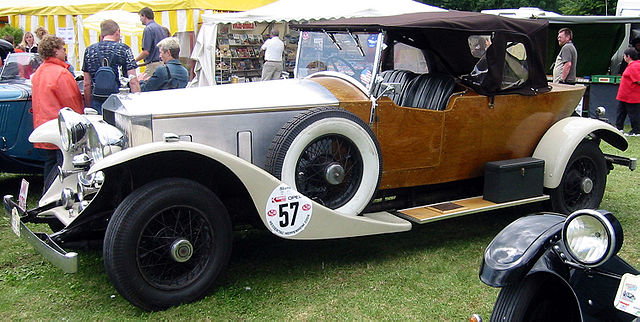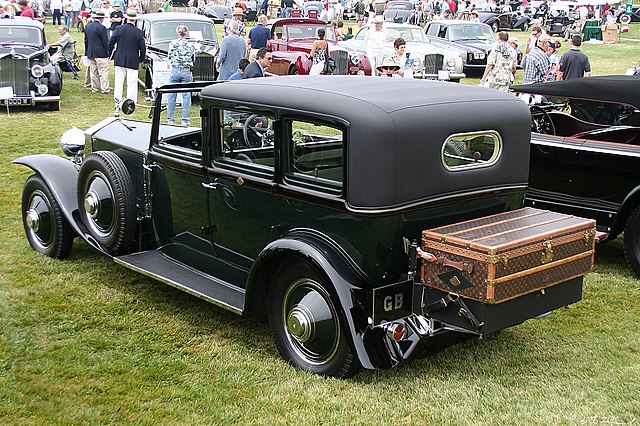
The Rolls-Royce Phantom I, produced between 1925 and 1931, marks a significant chapter in the legacy of luxury automobiles. Its introduction served as a testament to Rolls-Royce’s commitment to excellence, refinement, and unparalleled craftsmanship.
This vehicle not only set new standards for automotive luxury but also embodied the technological advancements of its time, making it a coveted piece among collectors and enthusiasts alike.
Introduction to the Phantom I

Origins and Development
The Rolls-Royce Phantom I was introduced as the successor to the highly successful Silver Ghost, with the intention of maintaining the brand’s position at the pinnacle of automotive luxury. Designed to offer superior performance and comfort, the Phantom I was unveiled in 1925, featuring an all-new 7.7-liter inline-six engine that promised smoother operation and improved power delivery over its predecessor.
Design and Innovation
The Phantom I’s design was a blend of traditional elegance and modernity, with a chassis that was built to accommodate custom coachwork, allowing buyers to personalize their vehicles extensively. This flexibility in design ensured that no two Phantom Is were exactly alike, with bodies ranging from stately limousines to sporty roadsters, crafted by renowned coachbuilders of the era.
Technological Advancements
Technologically, the Phantom I was ahead of its time, featuring a pushrod-operated overhead valve engine, a four-speed manual transmission, and servo-assisted brakes. These innovations not only enhanced the driving experience but also ensured the Phantom I’s superiority in performance and reliability, setting a benchmark for luxury automobiles.
The Heart of the Phantom: The Engine

Power and Performance
The 7.7-liter six-cylinder engine was the heart of the Phantom I, delivering smooth and robust performance. With an output that was considered impressive for its time, the Phantom I could achieve speeds that were unheard of for such a large and luxurious vehicle, making it a favorite among the elite who demanded both comfort and performance.
Engineering Excellence
Rolls-Royce’s commitment to engineering excellence was evident in the Phantom I’s engine design. The use of a large displacement was paired with meticulous engineering to ensure quiet operation and longevity, traits that became synonymous with the Rolls-Royce brand. The engine’s reliability and ease of maintenance were also noteworthy, contributing to the Phantom I’s enduring legacy.
Technological Features
In addition to its powerful engine, the Phantom I featured advanced technological innovations for its time. The introduction of an adjustable shock absorber system allowed for a smoother ride, while the servo-assisted braking system improved stopping power, enhancing the vehicle’s safety and handling characteristics.
Custom Coachwork: A Symbol of Status

The Art of Customization
The Phantom I’s chassis was designed to be a canvas for custom coachwork, making each vehicle a unique expression of its owner’s taste and status. Renowned coachbuilders, such as Barker, Park Ward, and Hooper, were commissioned to create bespoke bodies, ranging from formal limousines to extravagant cabriolets.
Personalization and Luxury
The level of personalization available to Phantom I buyers was unparalleled. Interiors were lavishly appointed with the finest materials, including leather, wood, and wool, ensuring that each vehicle was as comfortable as it was beautiful. Features such as silver-plated accessories, silk curtains, and bespoke luggage sets were not uncommon, reflecting the vehicle’s elite status.
A Showcase of Craftsmanship
The collaboration between Rolls-Royce and top coachbuilders showcased the pinnacle of automotive craftsmanship. Each Phantom I was a masterpiece of design and engineering, reflecting the skills and artistry of its creators. The attention to detail and quality in these vehicles set a standard that is still admired in the classic car world today.
Global Appeal and Legacy

The Phantom I Around the World
While the Phantom I was produced in Derby, England, it also found a significant market in the United States, where Rolls-Royce established a factory in Springfield, Massachusetts, to cater to the American clientele. The Springfield-produced Phantoms were tailored to meet the tastes and demands of the American market, further solidifying Rolls-Royce’s international appeal.
A Lasting Legacy
The Rolls-Royce Phantom I’s legacy is one of enduring excellence and luxury. As a symbol of status and sophistication, it set a benchmark for the automotive industry, influencing the design and production of luxury vehicles for decades. Today, the Phantom I is highly sought after by collectors, revered for its historical significance, craftsmanship, and beauty.
The Phantom I in Popular Culture
Symbol of Elegance
The Phantom I has been a symbol of elegance and luxury, making appearances in numerous films, television shows, and books. Its association with wealth, power, and sophistication has made it a popular choice for depicting high society and timeless luxury in various forms of media.
Collectors and Museums
The Phantom I holds a place of pride in private collections and museums around the world. Its appeal transcends automotive enthusiasts, attracting those who appreciate fine art and history. The vehicle is often featured in classic car shows and concours d’elegance, where it continues to captivate audiences with its grandeur and elegance.
A Lasting Impression
The Rolls-Royce Phantom I’s impact on the automotive world and popular culture is undeniable. It remains a symbol of the pinnacle of luxury and craftsmanship, a testament to Rolls-Royce’s legacy of producing vehicles that are not just modes of transportation, but works of art.
The Rolls-Royce Phantom I is more than just a car; it is a piece of automotive history that embodies the pinnacle of luxury, craftsmanship, and innovation of its time. Its legacy continues to influence the design and perception of luxury vehicles, making it a timeless classic that will continue to be celebrated for generations to come.
